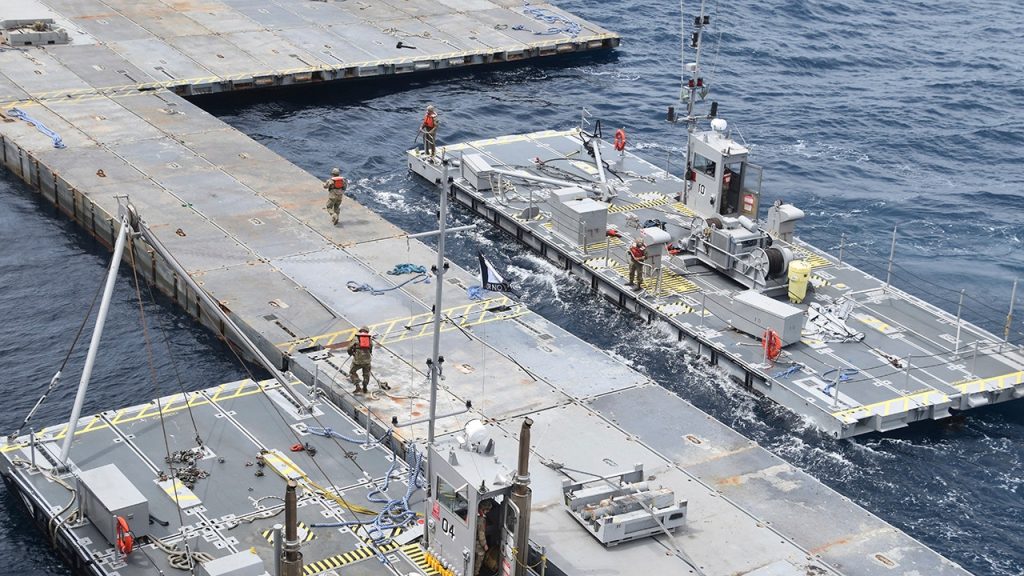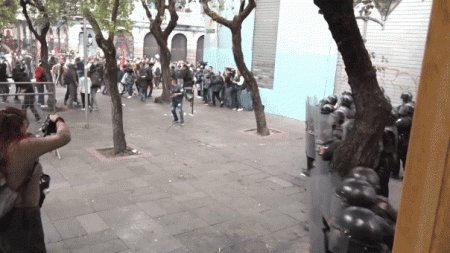The U.S. military has completed the construction of a massive metal pier in northern Gaza, measuring approximately 1,500 feet long. This pier is part of a $320 million initiative by the Biden administration aimed at establishing a sea route to deliver humanitarian aid to Gaza, where conflict between Israel and Hamas continues. The construction of the new pier and causeway presents various risks and challenges for aid delivery teams as they navigate uncertain dangers to bring aid through the eastern Mediterranean into Gaza. The Pentagon is working alongside NGO partners to ensure that aid can be successfully delivered through this new maritime route.
The opening of the additional sea route comes as the conflict between Israel and Hamas has intensified, with concerns raised about the ability to access land crossings in Rafah. Some humanitarian organizations, such as Oxfam, argue that the sea route is unnecessary since land crossings have the capacity to deliver all required aid. The amount of aid that can be delivered to Gaza is contingent upon approval from Israeli officials, with concerns that the aid may fall into the hands of Hamas. The potential success of the maritime corridor hinges on Israel’s willingness to allow it to function, making it a costly alternative with uncertain outcomes.
Israeli officials have facilitated the entry of thousands of aid trucks into Gaza and have pledged to continue to do so. However, they have accused Hamas of disrupting aid distribution by hijacking and attacking convoys. While the Israeli military has committed to distributing aid in accordance with international law, concerns remain about the distribution of aid and the safety of aid workers. Despite ongoing conflict and challenges in aid distribution, the International Rescue Committee has reported a 13% increase in truckloads of aid entering Gaza in the previous month.
The toll of the Israel-Hamas conflict on Palestinian civilians in Gaza has been devastating, with differing estimates of the number of casualties. Palestinian health officials estimate more than 35,000 deaths, while Israeli officials estimate around 16,000 deceased civilians. A U.N. report from May 8 found that nearly 13,000 women and children have been killed in the conflict. These high casualty figures underscore the urgent need for humanitarian aid and support for the civilians affected by the ongoing violence. Despite the challenges and risks involved in aid delivery, efforts are being made to ensure that essential supplies reach those in need in Gaza.
The completion of the metal pier by the U.S. military marks a significant step in the Biden administration’s initiative to establish a sea route for humanitarian aid to Gaza. The construction of the pier, spanning the length of five U.S. football fields, is part of a broader effort to address the humanitarian crisis in Gaza caused by the conflict between Israel and Hamas. While the project presents challenges and uncertainties, efforts are being made to work with NGO partners to ensure the successful delivery of aid through the new maritime route. Amidst ongoing conflict and concerns about aid distribution, the international community is working to provide support and assistance to those affected by the violence in Gaza.













